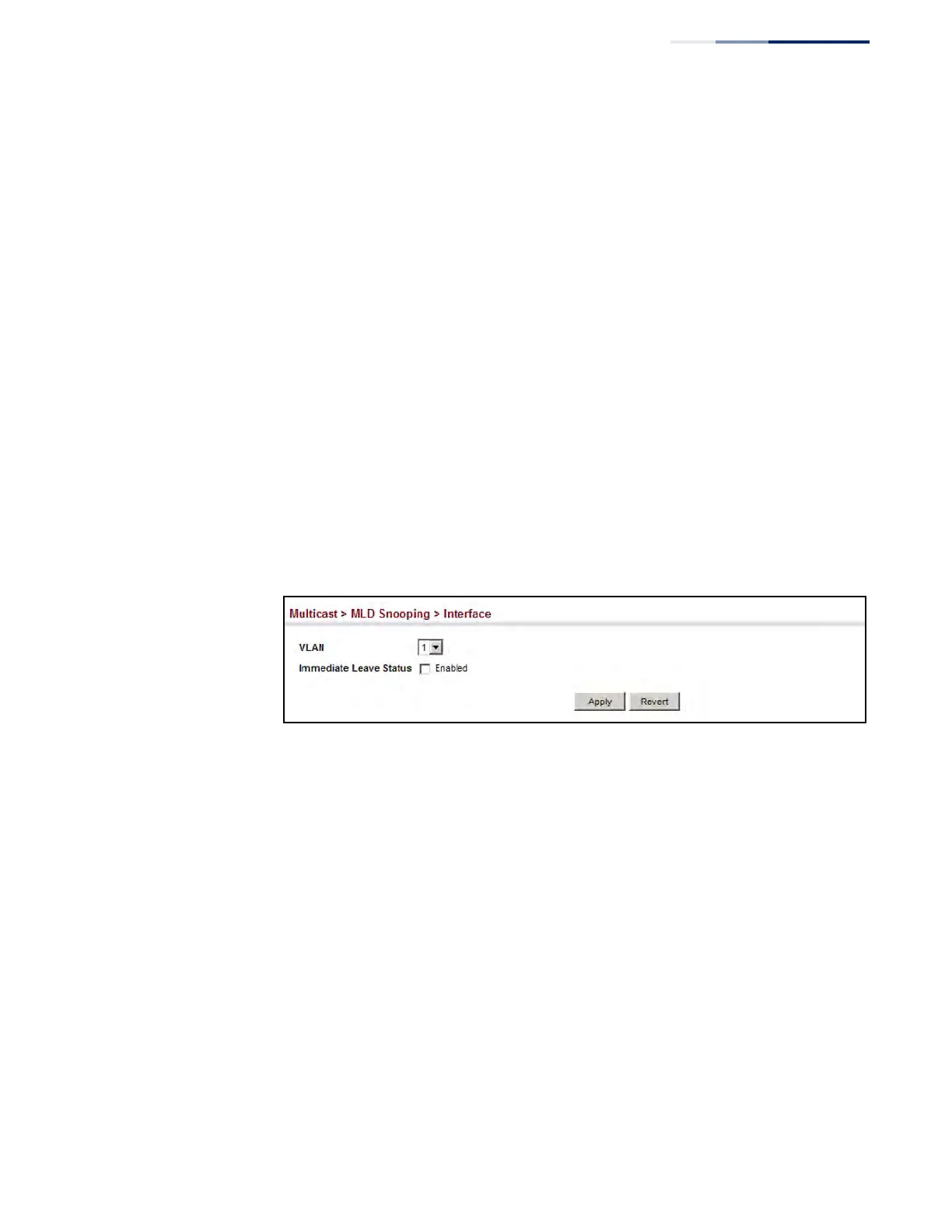Chapter 14
| Multicast Filtering
MLD Snooping (Snooping and Query for IPv6)
– 569 –
◆ Immediate Leave Status – Immediately deletes a member port of an IPv6
multicast service when a leave packet is received at that port and immediate
leave is enabled for the parent VLAN. (Default: Disabled)
If MLD immediate-leave is not used, a multicast router (or querier) will send a
group-specific query message when an MLD group leave message is received.
The router/querier stops forwarding traffic for that group only if no host replies
to the query within the specified timeout period.
If MLD immediate-leave is enabled, the switch assumes that only one host is
connected to the interface. Therefore, immediate leave should only be enabled
on an interface if it is connected to only one MLD-enabled device, either a
service host or a neighbor running MLD snooping.
Web Interface
To configure immediate leave for MLD Snooping:
1. Click Multicast, MLD Snooping, Interface.
2. Select a VLAN, and set the status for immediate leave.
3. Click Apply.
Figure 357: Configuring Immediate Leave for MLD Snooping
Specifying Static
Interfaces for an
IPv6 Multicast Router
Use the Multicast > MLD Snooping > Multicast Router (Add Static Multicast Router)
page to statically attach an interface to an IPv6 multicast router/switch.
Depending on your network connections, MLD snooping may not always be able
to locate the MLD querier. Therefore, if the MLD querier is a known multicast router/
switch connected over the network to an interface (port or trunk) on the switch,
you can manually configure that interface to join all the current multicast groups.
Command Usage
MLD Snooping must be enabled globally on the switch (see “Configuring MLD
Snooping and Query Parameters” on page 567) before a multicast router port can
take effect.
Parameters
These parameters are displayed:
◆ VLAN – Selects the VLAN which is to propagate all IPv6 multicast traffic coming
from the attached multicast router. (Range: 1-4094)

